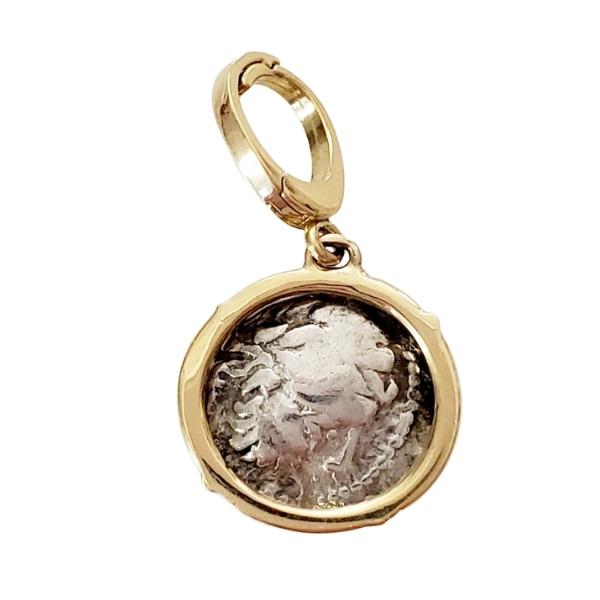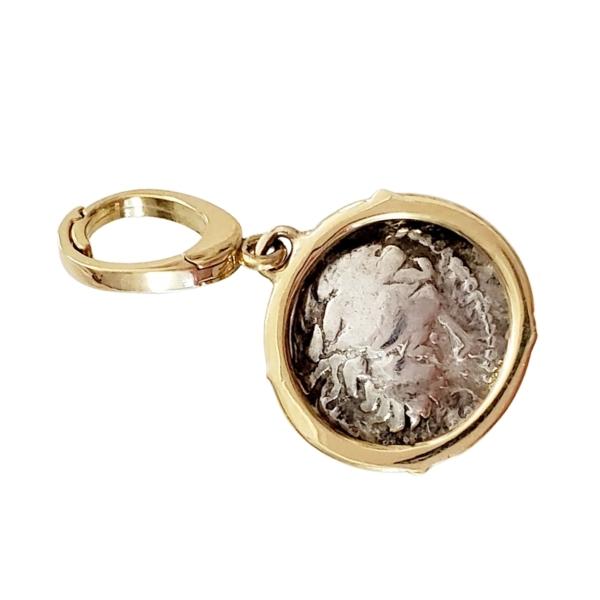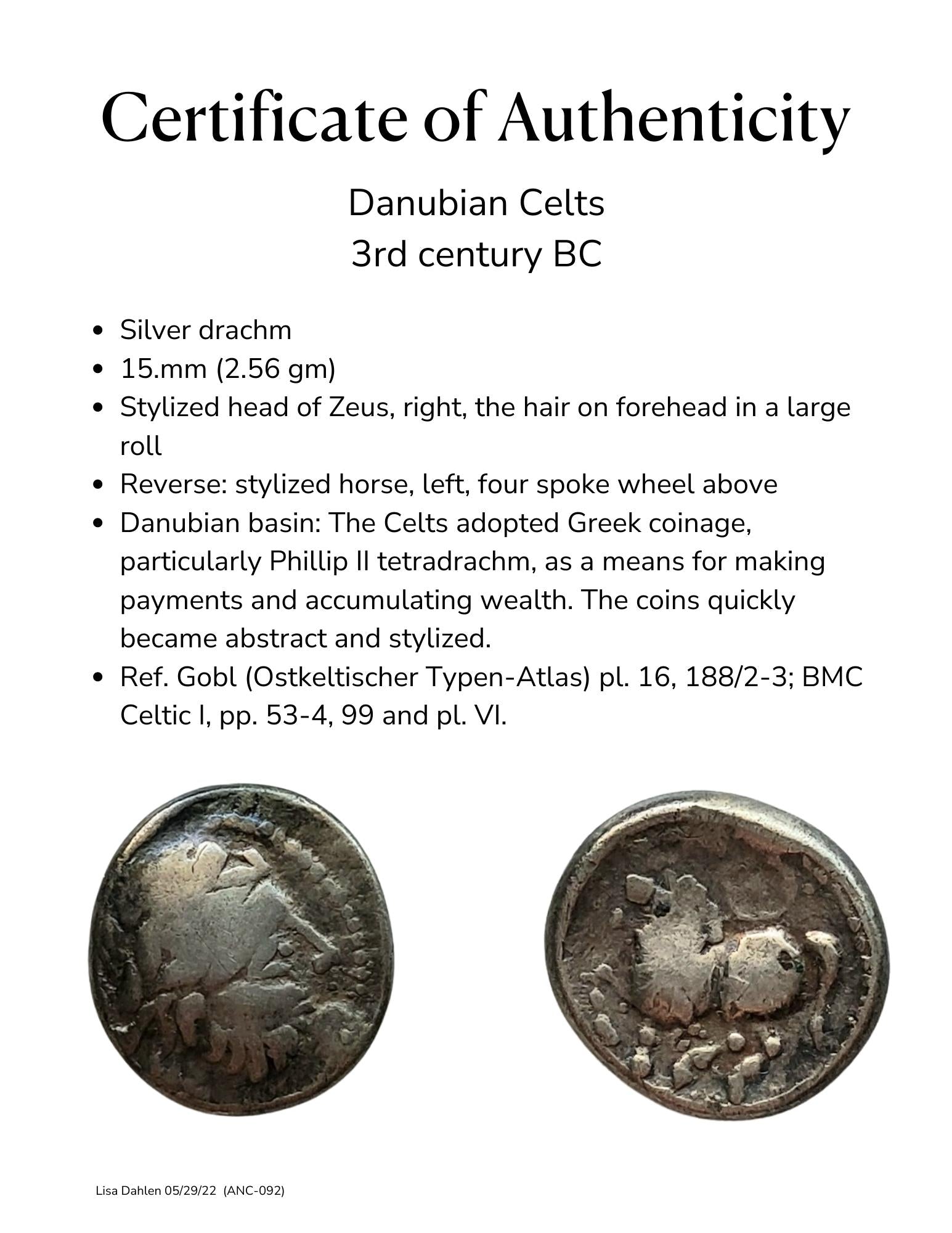



Celtic Danube Silver Drachm Coin circa 200 BC (092)
Small ancient silver coin in the stylized type of the Celtic peoples. The horse is charming and rotund, with the Celtic abstraction beginning to show in the legs.
Coin size 13mm
Hand-fabricated 18kt recycled gold mount with 18kt gold enhancer bail.
One of a kind with a Certificate of Authenticity.
Chain not included; available separately. See Chains
Dated: circa 200 BCE
The Celts were a culture that stretched from modern-day Spain to Syria and Great Britain to the Danube. The Kugelwange-type Celtic coin originated in parts of Austria, Croatia, Hungary, Slovakia, and Slovenia. The Celts adopted Greek and Roman coins for payments and wealth accumulation. One type of Celtic coin was based on the Phillip II tetradrachm. Over time, coin engravings took on Celtic art signatures and diverted them from Greek and Roman artwork. The horse lost its rider, and the horse itself became abstract, eventually looking like a disjointed puppet. The image of Hercules or Zeus also became more abstract, with the hair and lion skin appearing as patterns of dots and lines.Danubian Celts Blog
Choose options




Small ancient silver coin in the stylized type of the Celtic peoples. The horse is charming and rotund, with the Celtic abstraction beginning to show in the legs.
Coin size 13mm
Hand-fabricated 18kt recycled gold mount with 18kt gold enhancer bail.
One of a kind with a Certificate of Authenticity.
Chain not included; available separately. See Chains
Dated: circa 200 BCE
The Celts were a culture that stretched from modern-day Spain to Syria and Great Britain to the Danube. The Kugelwange-type Celtic coin originated in parts of Austria, Croatia, Hungary, Slovakia, and Slovenia. The Celts adopted Greek and Roman coins for payments and wealth accumulation. One type of Celtic coin was based on the Phillip II tetradrachm. Over time, coin engravings took on Celtic art signatures and diverted them from Greek and Roman artwork. The horse lost its rider, and the horse itself became abstract, eventually looking like a disjointed puppet. The image of Hercules or Zeus also became more abstract, with the hair and lion skin appearing as patterns of dots and lines.Danubian Celts Blog
